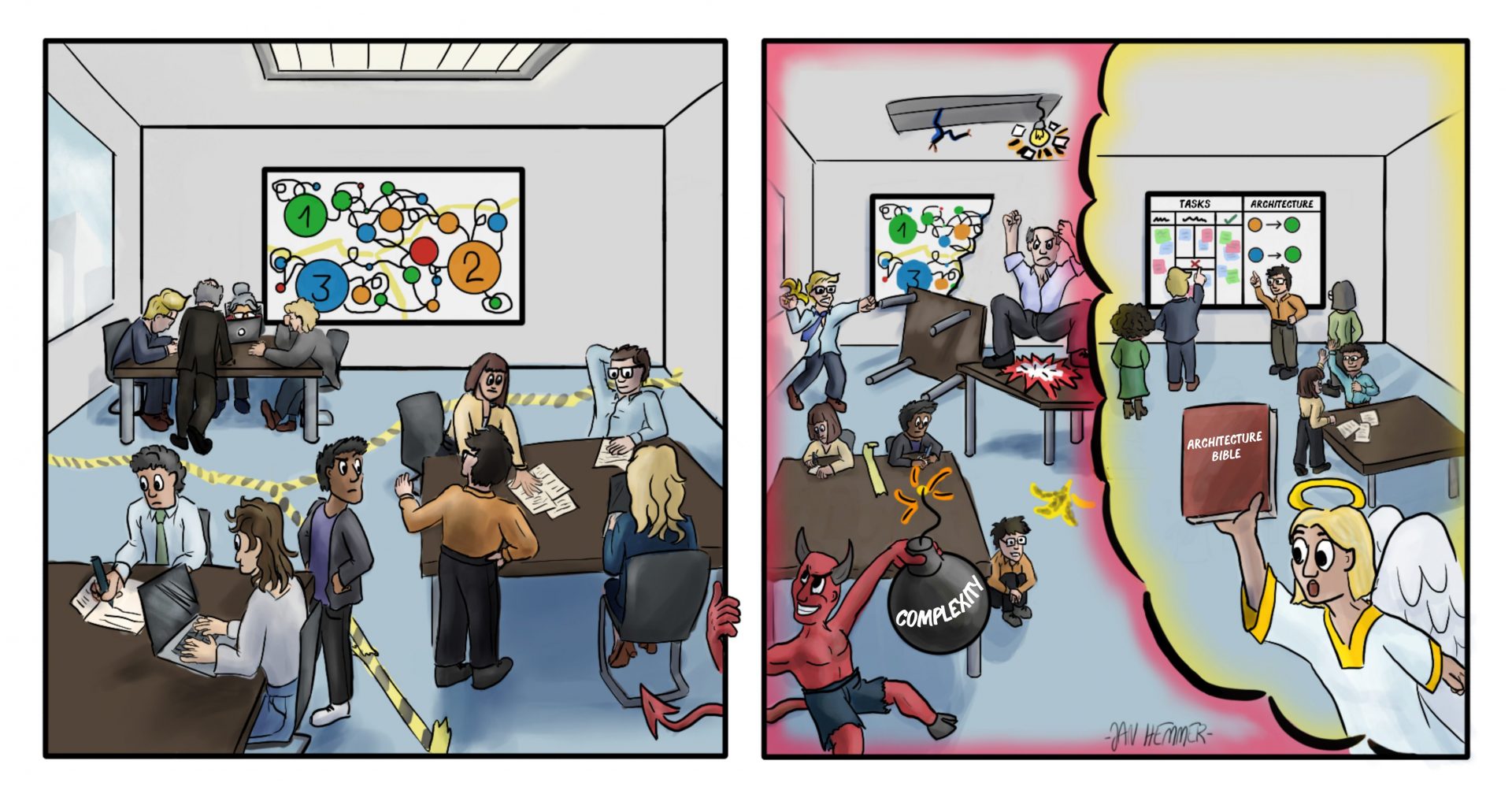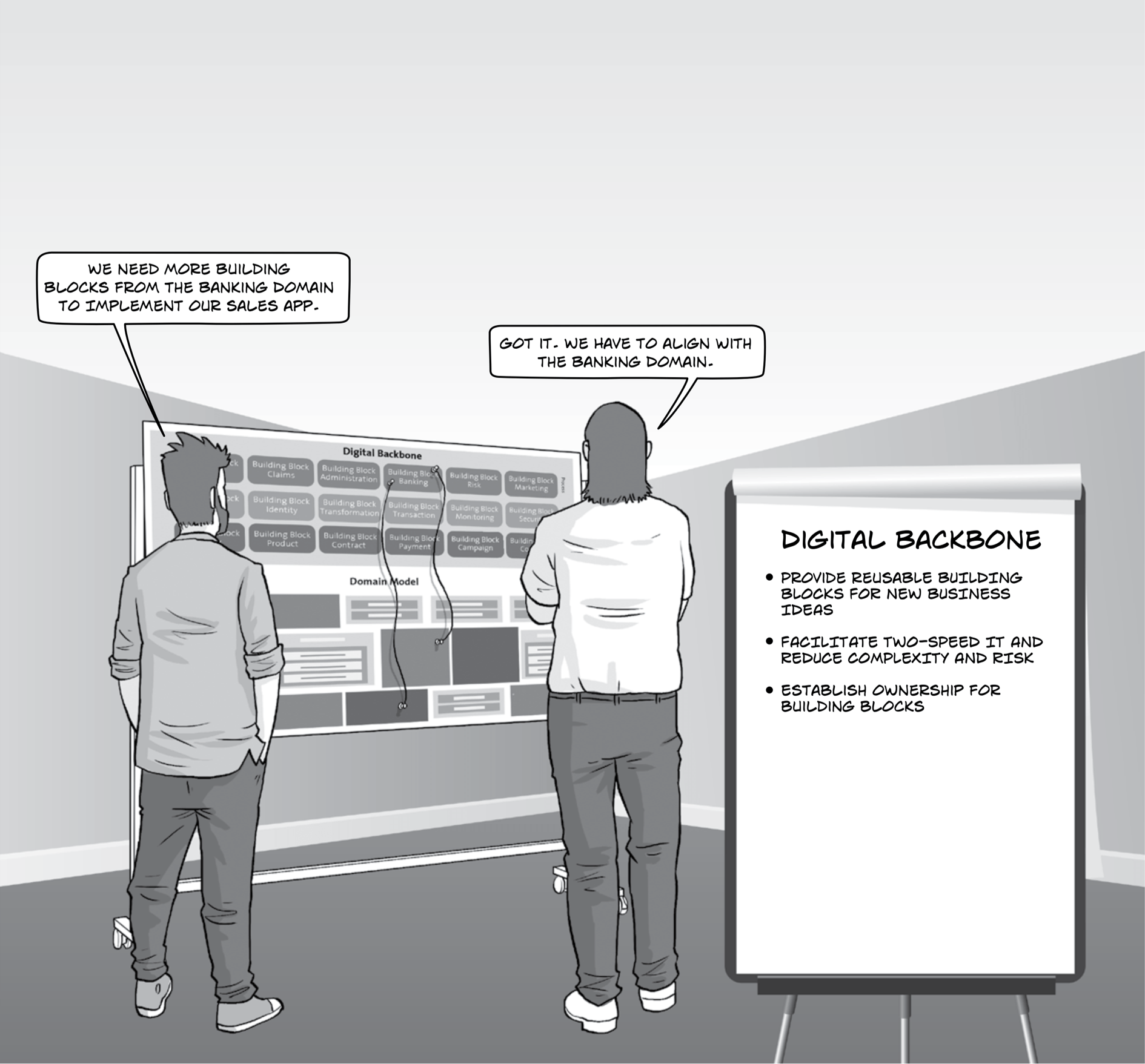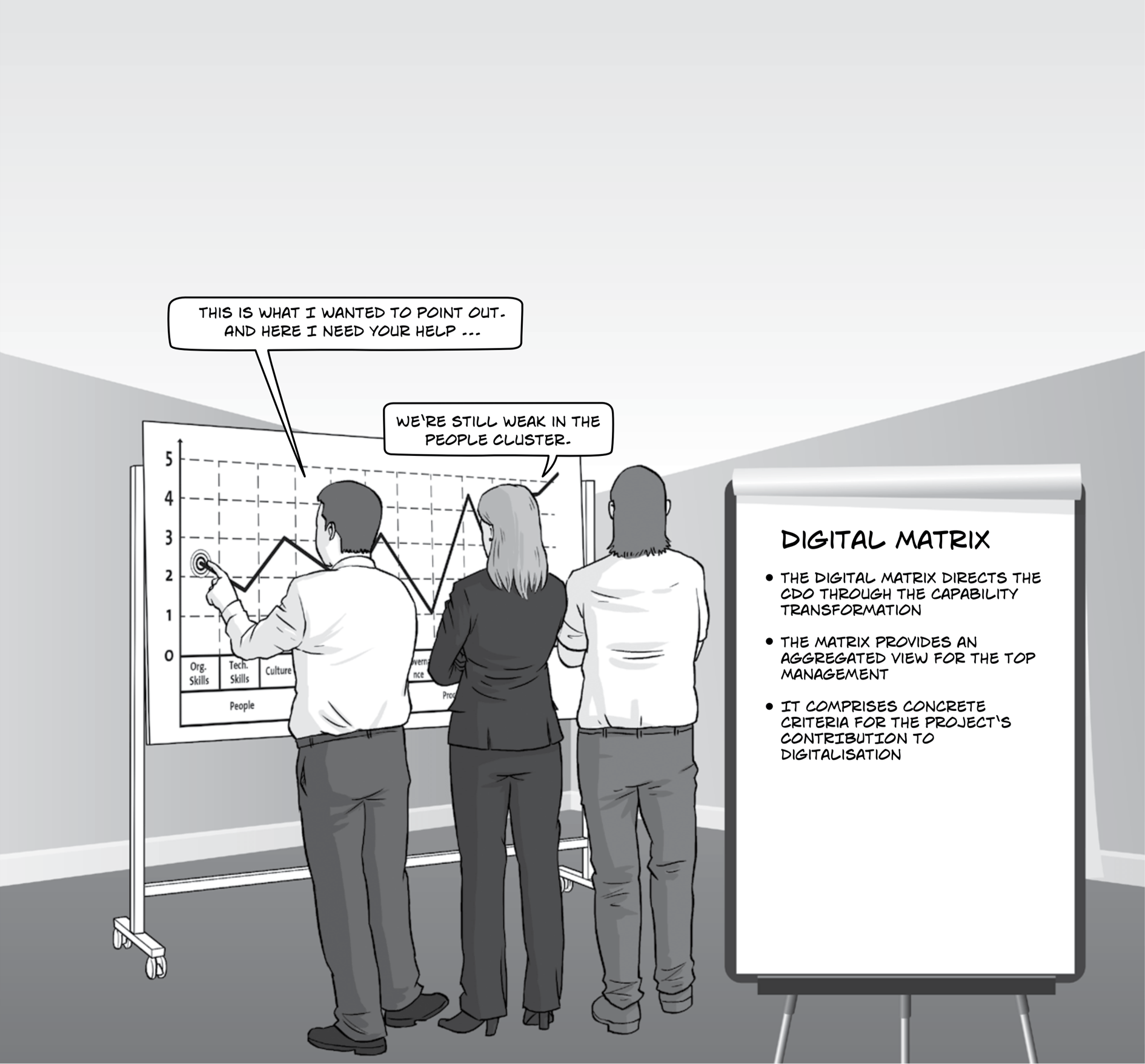For companies, rapid implementation of various new digital processes is of great importance. How can enterprises realize this in the best possible way? Different digitalisation dimensions have to be considered in order to specify and visualise the necessary change. The basis for this is a solid framework. What is this all about? You will find answers and details in this article.
Continue readingResolving Team Dependencies the Agile Way
This article describes the role of “Core Topic Responsible” (CTR) – a caretaker for overarching requirements that are spread across multiple teams. When working in a complex agile setup, such as SAFe or the Spotify approach, teams might need to deal with requirements that have strong interdependencies not only within their own team, but across the whole organization, including non-agile lines of business. We therefor recommend introducing a new role, which we call the “Core Topic Responsible”. Ideally, this role is to be assumed by a Business Analyst, who represents a central point of knowledge and assumes ownership for the overarching topic.
Continue readingAgile Sin #5: Complex Architecture
“Everything everywhere” – the age of digitalization requires convenient access to and constant availability of IT systems throughout all channels and devices. However, this means additional complexity in company processes and procedures. As a result, the digital transformation is accompanied by a rigorous agile restructuring of organizations – often blindly following every trend. A consistent enterprise architecture often falls by the wayside and technical debts pile up continuously.
Continue reading9.6 Digital Backbone
A digital backbone consists of individual building blocks, enabling an enterprise to react to the rapid changes and new requirements of a digital world. Each one of these blocks encapsulates an important element of the corporate’s business. In this context, the digital capabilities of a company are mapped onto this set of building blocks, which in turn can easily be joined together to create new, specific solutions. This is illustrated in the figure below. The digital backbone provides a rapid way of implementing various new digital processes – e.g., for providing different sales channels, such as mobile apps – as well as reducing the time to market of digital products.
Continue reading9.7 Digital Matrix
As we have seen in the previous sections, digitalisation predominantly entails (a) transforming an enterprise’s portfolio of products and services and (b) acquiring capabilities the organisation requires to achieve the desired target state. Here, the Digital Matrix is a central steering tool which enables the successive development of corporate capabilities, leading to a targeted and well-structured transformation process. Different digitalisation dimensions have to be considered in order to specify and visualise the necessary change.
The Digital Matrix provides a hierarchical breakdown of the required capabilities of the organisation and compares the existing maturity of the digitalisation initiative with the target state.




